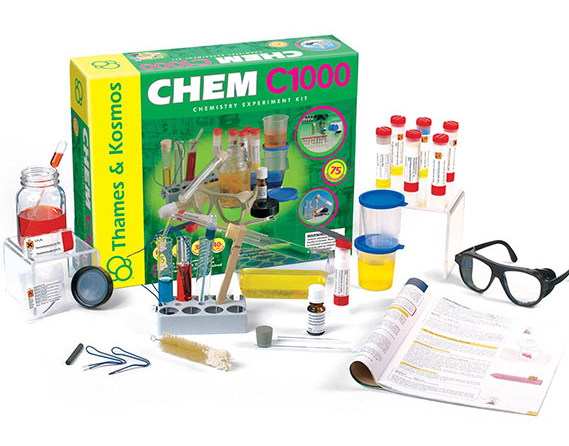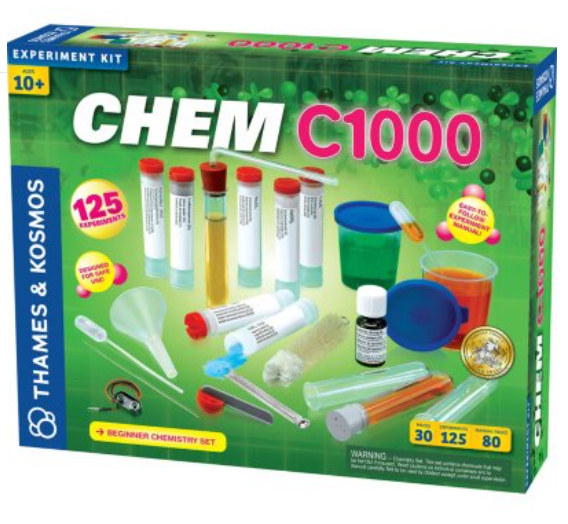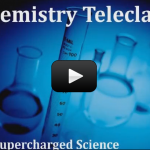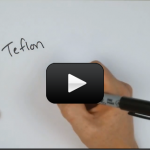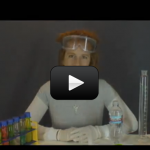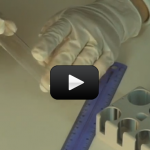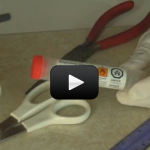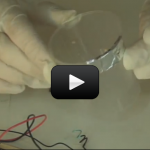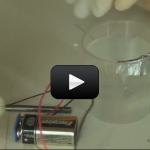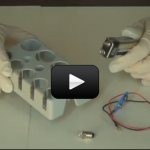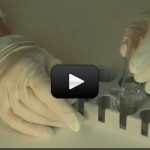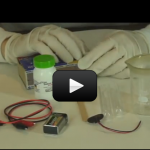Split the water molecule, fire copper ions across a solution, capture oxide gases, create a magnesium battery, and more with this lesson in chemistry.
You’ll also be able to identify the elements in different chemical substances with dazzling colors in flame tests. With this lesson, you will begin to build a strong foundation in chemistry with exposure to a broad range of chemical phenomena and hands-on laboratory experience. Here’s what you can expect to learn about by the end of the lesson:
In this unit, you will learn how to build your own home chemistry lab safely under the direction of professionals. We'll show you how to do real chemistry experiments, provide chemical storage information, give guidelines on proper chemical disposal when you're finished, highlight lab tips and tricks, and warn you about things to watch out for. This is real chemistry for real kids.
You’ll also be able to identify the elements in different chemical substances with dazzling colors in flame tests. With this lesson, you will begin to build a strong foundation in chemistry with exposure to a broad range of chemical phenomena and hands-on laboratory experience. Here’s what you can expect to learn about by the end of the lesson:
In this unit, you will learn how to build your own home chemistry lab safely under the direction of professionals. We'll show you how to do real chemistry experiments, provide chemical storage information, give guidelines on proper chemical disposal when you're finished, highlight lab tips and tricks, and warn you about things to watch out for. This is real chemistry for real kids.
How do I use this information? You have two options, depending on your comfort level and ultimate educational goals. You can just watch the videos and talk about what's going on with your child, or you can watch the videos and then perform the experiment with your child.
This unit includes the instructional videos for Chemistry, and is meant to be used in conjunction with the experiments in the Thames and Cosmos C1000 and/orC3000 chemistry lab kits. The manual included in the C1000 and 3000 has complete safety information and many more experiments for you to complete after you finish this unit.
All experiments presented here at AT YOUR OWN RISK. You are fully responsible for your own safety and those around you. (No building nuclear reactors in your garage.)
To put it simply, don’t eat anything in your chemistry lab, keep children and pets away from your lab, lock up your chemicals safely, learn how to store your chemicals safely, and don’t create large quantities of anything explosive, corrosive, or toxic. Always wear safety equipment and do your experiments in a spot what has plenty of air for ventilation, water and a drain, and a phone.
In all seriousness, be safe, have fun, play with the kids, and if you run across anything that boggles the mind, let us know and we'll try to help you out.
This unit includes the instructional videos for Chemistry, and is meant to be used in conjunction with the experiments in the Thames and Cosmos C1000 and/orC3000 chemistry lab kits. The manual included in the C1000 and 3000 has complete safety information and many more experiments for you to complete after you finish this unit.
All experiments presented here at AT YOUR OWN RISK. You are fully responsible for your own safety and those around you. (No building nuclear reactors in your garage.)
To put it simply, don’t eat anything in your chemistry lab, keep children and pets away from your lab, lock up your chemicals safely, learn how to store your chemicals safely, and don’t create large quantities of anything explosive, corrosive, or toxic. Always wear safety equipment and do your experiments in a spot what has plenty of air for ventilation, water and a drain, and a phone.
In all seriousness, be safe, have fun, play with the kids, and if you run across anything that boggles the mind, let us know and we'll try to help you out.
Scientific Concepts:
- Acids react with metals and can burn your skin. They register between 1 and 7 on the pH scale.
- Bases are slippery and can also burn your skin. They measure between 7 and 14 on the pH scale.
- pH stands for “power of hydrogen” and is a measure of how acidic a substance is.
- An acid-base reaction deals with reactions that involve hydrogen (protons).
- Atoms are made of a core group of neutrons and protons, with an electron cloud circling the nucleus.
- Elements A substance made up of only one particular kind of atom is called a chemical element, and you can find a whole slew of these on the periodic table. The number assigned to the chemical element refers to the number of protons in the nucleus.
- A molecule is the smallest unit of a compound that still has the compound’s properties attached to it. Molecules are made up of two or more atoms held together by covalent bonds.
- The electrons in the outermost shell are the ones that form the bonds with other atoms.
- When one atom accepts or donates an electron to another atom, an ionic bond is formed.
- When the atoms share the electron(s), a covalent bond is formed.
- Usually an electron is more attracted to one atom than another, which forms polar covalent bond between atoms.
- Endothermic reactions are reactions that absorb heat when they react (like a cold compresses).
- Exothermic reactions release energy in the form of heat, light, and sound (think fireworks).
- Different factors affect the rate of reaction, or speed of the chemical reaction, including temperature, pressure, surface area, catalysts, and more. The main idea is that the more collisions between particles, the faster the reaction will take place.

